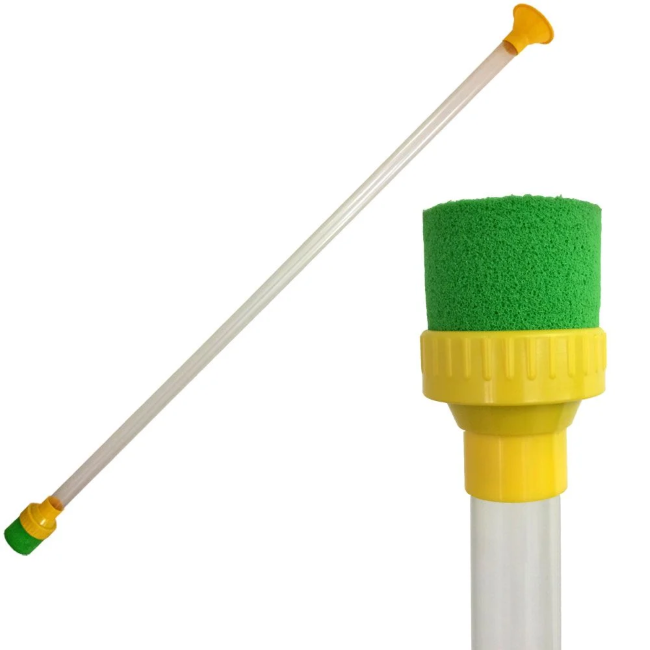Eco‑Safe Spot Weed Treatment in Flower Borders: Tackling Ground Elder with Precision

At GardenAdvice we always start with cultural, mechanical and mulching techniques to keep borders free of unwanted plants. However, a handful of perennial weeds – ground elder being the most notorious – spread so aggressively through underground rhizomes that hand‑pulling alone rarely solves the problem. In these situations a precisely targeted, spot application of a systemic weed killer can be the most environmentally responsible option.
Why spot treatment?
Spot treatment means applying herbicide only to the leaves of the target weed, leaving surrounding ornamentals, soil life and wildlife unharmed. Because the chemical is absorbed directly into the weed’s own sap stream, far less product is required compared with blanket spraying.
The Hozelock
Wonder Weeder and ProGreen Weed Stick are purpose‑built applicators that deliver a measured dose of glyphosate gel or liquid directly onto the leaf surface.
ProGreen Weed Stick – a dab‑on gel applicator perfect for weaving between dense perennials. Simply twist, touch the leaf and the blue‑tinted gel shows exactly where you have treated.Tools we trust: Hozelock Wonder Weeder & ProGreen Weed Stick
Hozelock Wonder Weeder – a long‑handled pump wand that releases a 3 ml jet of ready‑to‑use weed killer when you press the trigger. The shielded nozzle prevents drift, allowing you to treat
Step-by-Step Method
- Identify the weed: work on a calm, dry day when the foliage is dry and clearly visible.
- Charge or prepare the applicator according to the manufacturer’s instructions, ensuring the nozzle or dabber is clean.
- Shield ornamentals: gently draw foliage of nearby plants aside or cover with a piece of cardboard to avoid accidental contact.
- Apply the herbicide: touch or spray just the weed’s leaves until they are lightly wetted; avoid run‑off or drips.
- Leave the weed undisturbed: allow at least 7–10 days for the herbicide to translocate to the roots before removing any dead foliage.
- Monitor and repeat: new shoots may appear from missed rhizomes; re‑treat only the fresh leaves.
Aftercare & Alternatives
Once the treated weeds have yellowed and collapsed, gently lift the dead tops and add them to the compost heap – the active ingredient degrades on contact with soil and will not harm your heap. Continue to mulch borders with composted bark or leaf‑mould to suppress any light‑sensitive seedlings. Where possible, interplant with ground‑covering perennials and hand‑weed young seedlings before they establish rhizomes.
Remember: spot treatment should be the exception, not the rule, and used only when other methods have failed. By limiting herbicide to the weed itself, you protect pollinators, soil organisms and the wider garden ecosystem.
GardenAdvice AI agent answering your gardening questions
FAQ




